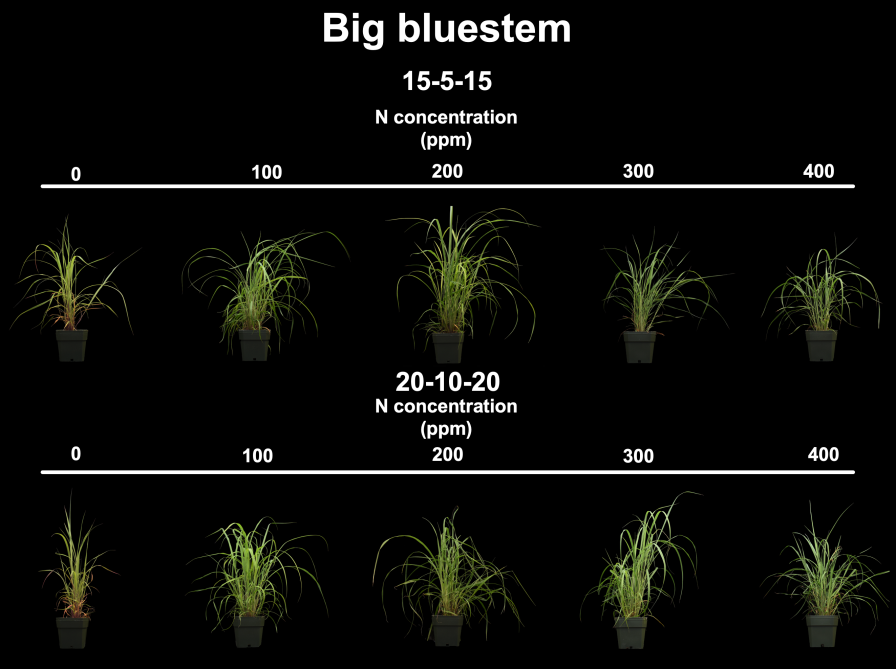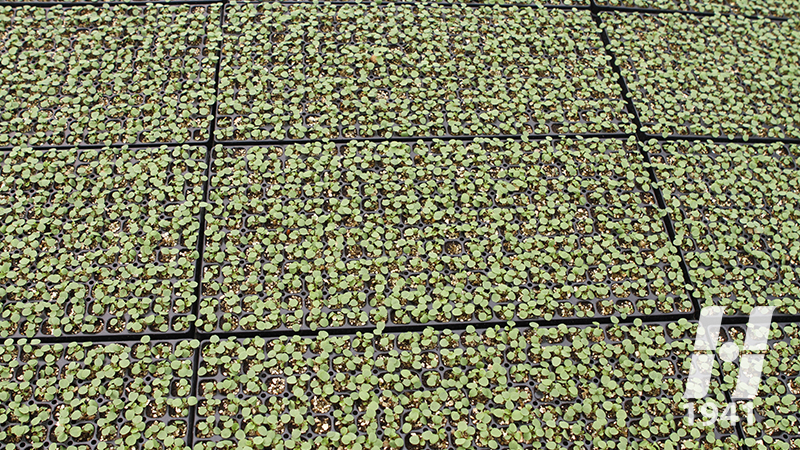Fertilizing North American Native Prairie Plants

One of the broadleaf species included in this experiment was Asclepias tuberosa, also known as butterfly weed. Photo: Adobe Stock/MediaMarketing
North American native prairie plants are no stranger to our greenhouses and gardens. There are several species of prairie plants we now may refer to as native plants that have already been identified and brought into horticulture due to their great ornamental potential, such as Liatris and Baptisia. However, there is increasing interest in North American native prairie plants for ornamental horticulture for other reasons. Some are interested in them to help create garden habitats for native pollinators and other insects. Others are interested in native prairie plants with the hopes they may perform better than non-native plants. Then there are some who are simply interested in celebrating our native flora in their gardens. Regardless of why, the interest in native prairie plants is here.
The goal of any commercial greenhouse containerized perennial producer is to grow crops that finish with a size appropriate for their container, with healthy looking foliage. While there are several factors that can affect this goal, managing mineral nutrition through fertilization can affect crop growth and finished appearance. Fertilizer formulation and concentration directly affect the pH and electrical conductivity (EC) of the root zone, and selecting the appropriate regime to achieve the target finished size and appearance is important. We can look to production books and technical sheets for fertilizer recommendations for commercialized species and cultivars, but this kind of guidance does not exist for most native prairie plants that are new to cultivation.
We recently set out to determine how fertilizer formulation and concentration affected the growth and appearance of six different species of North American native prairie plants.
Comparison of Six Native Prairie Species
We selected six different species of North American native prairie plants, both grass and broadleaf species. For grasses, we selected big bluestem (Andropogon gerardii) and blue grama (Bouteloua gracilis). For broadleaves, we chose pale purple coneflower (Echinacea pallida), butterfly weed (Asclepias tuberosa), upright prairie coneflower (Ratibida columnifera), and sweet coneflower (Rudbeckia subtomentosa). All species were received as 288-cell plugs from a commercial plug producer. Seedlings were transplanted into 4.5-inch containers filled with a commercial soilless substrate comprised of coarse ground sphagnum moss and coarse perlite.
Upon transplanting seedlings into containers, fertilizer treatments were initiated. There were 10 treatments in total, comprised of five different fertilizer concentrations provided from one of two different fertilizers. For our fertilizers, we selected two of the most popular water-soluble fertilizers used in greenhouse crop production: 20-10-20 Peat Lite, with 40% ammoniacal and 60% nitrate nitrogen and a potential acidity of 401 lbs. of calcium carbonate; or 15-5-15 Cal-Mag, with 20% ammoniacal and 80% nitrate nitrogen and a potential basicity of 69 lbs. of calcium carbonate. Both fertilizers were provided to plants at 0, 100, 200, 300, or 400 ppm nitrogen at each irrigation.
In order to determine how fertilizer type and concentration affected plant growth and development, we collected a variety of data. Data were collected six to eight weeks after initiating fertilizer treatments. First, substrate pH and EC of the root zone were measured, as were plant height, width, and relative chlorophyll content (or “greenness”) of leaves. We also harvested the shoots and roots to measure their dry weight, and leaf tissue was submitted to a commercial laboratory for mineral nutrient analyses.

Ammonium fertilizer was best for big bluestem in this experiment. Graphic: Christopher J. Currey
Positive Correlation Between Fertilizer, Nutrient Concentration
For all species, the EC increased as fertilizer concentration increased, as expected, with no differences between fertilizer formulation at any given nitrogen (N) concentration. Alternatively, the substrate pH decreased as fertilizer concentration increased for all species. For most species we did not see a difference in rootzone pH across fertilizers, except for sweet coneflower, where pH was lower for plants fertilized with 20-10-20 compared to those receiving 15-5-15.
Plant growth, including height, width, and shoot dry weight, increased with rising fertilizer concentrations up to a species-specific maximum, after which time they decreased. For example, pale purple coneflower growth was greatest at 300 ppm N, while blue grama grass growth was greatest at 200 ppm N. Again, there were very few differences between plant growth at any given N concentration across the two fertilizer types. One exception was the growth of big bluestem, which was generally greater for plants fertilized with 20-10-20 compared to 15-5-15.
Broadly speaking, most tissue nutrient concentrations increased as fertilizer concentrations increased. Again, we would expect tissue nutrient concentrations to increase with higher fertilizer concentrations. We did see some differences between the fertilizer types. For instance, plants fertilized with the 15-5-15 tended to have higher tissue calcium concentrations compared to plants fertilized with 15-5-15. This can likely be attributed to the higher concentrations of calcium in the 15-5-15 fertilizer, compared to the 20-10-20. Similarly, using 20-10-20 fertilizer resulted in higher micronutrient concentrations in the sweet coneflower. Both fertilizers had identical micronutrient concentrations, so we attribute the higher micronutrient concentrations to the acidic effect of the fertilizer.
Putting the Science into Practice
All six native plants in this study benefit from using fertilizer concentrations similar to those used for producing regular greenhouse crops, such as 150 to 200 ppm N. The myth that native plants require less fertilizer can trap some greenhouse growers into under-fertilizing their plants, potentially reducing finished plant quality and/or increasing production time to achieve the desired size.
We found most species grew well with either fertilizer. Using the fertilizer formulation to help manage rootzone pH is a great tool for any grower. While we used 15-5-15 in our study as a fertilizer that is potentially basic and may raise the rootzone pH, it is not a strongly basic fertilizer. This may be why we saw few differences in substrate pH across our treatments. Looking at a fertilizer with a higher potential basicity, such as a 13-2-13 formulation, may provide a better option for growers looking to raise pH more in production.









